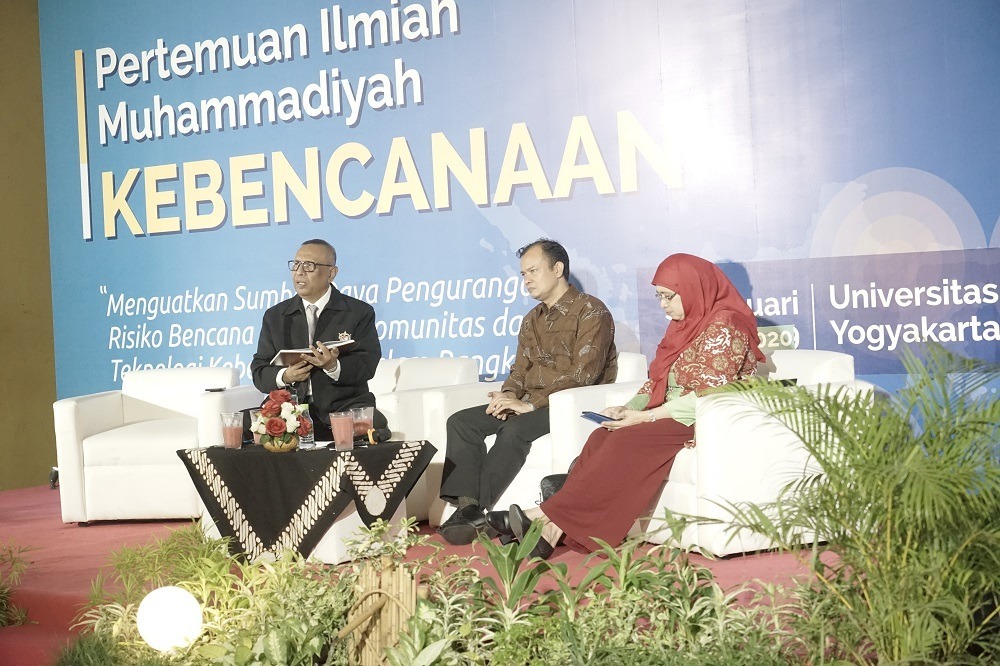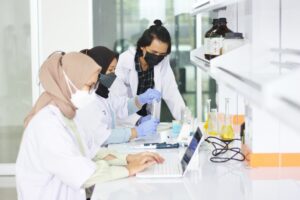
Prof. Syamsul Maarif, Head of BNPB in 2008-2015 said that the anticipation of disasters in Indonesia still needs to be improved. In terms of accurate information, people must not blame each other but mutually reinforce each other, and improve disaster policies and regulations. In addition, Syamsul also explained that the social system is a plurality of actions to respond to and deal with disaster emergencies. “The social system is a plurality, namely the actions of social elements that interact with each other in accordance with the norms to achieve common goals. Therefore, what is meant by plurality of actions is synergy by supporting, criticizing and correcting, like how Muhammadiyah continues to move forward to be proactive in tackling disasters,” he explained in a panel discussion on the Muhammadiyah Disaster Management Meeting held by the Muhammadiyah Disaster Management Center (MDMC) at Universitas Muhammadiyah Yogyakarta (UMY), on Thursday (1/30).
Furthermore, Syamsul also explained about the handling of disaster emergency that starts from an emergency alert, emergency response, emergency transition to recovery, followed by a collaboration between the government, local government, central volunteers, local volunteers, and affected communities. “The next emergency response is sapalibatism and vertizontal, namely how government relations that are bureaucratic in nature have a volunteer’s spirit when a disaster occurs in an area. And the last is facilitative leadership, including in terms of empowering the community, “he explained.
Syamsul also explained that the culture of disaster awareness begins with the family. “To prepare for a resilient community, disaster awareness must start from the family. With a ten year method, the family must provide knowledge about the threats and risks of disasters and how to avoid and prevent them, then be aware of the enforcement of laws and regulations, foster mutual development, habitus, and disaster resilience which includes information, anticipation, protection, and adaptation, “He said.
This explanation was continued by Prof. Teuku Faisal Fathani, Lecturer at the University of Gadjah Mada who explained that resilience involves preparedness, responsiveness, disaster reduction, and recovery carried out in balanced proportions. “Risk reduction is complicated, difficult and it takes longer to see its results. The focus on disaster risk aims to reduce the damage caused by natural hazards such as earthquakes, floods, droughts, and storms, through the ethics of prevention. Therefore it is necessary to change the paradigm from handling to reduction, from vulnerability we must focus on risk, from a single mandate to an integrated one, from a centralized system to a shared responsibility,” he explained.
Faisal also explained that the current ISO / SNI standard can be used for humanitarian missions, as it is used in the standard early warning system for natural disasters. “There are already two SNIs already issued, namely SNI 8236 in 2017 for landslide early warning systems and SNI 8240 in 2019 for multi-disaster early warning systems, and also there are already published ISOs which are ISO 22327 and ISO 22328 for multi disasters. For early warning systems, we should not carelessly install tools until we know the risk of disaster. Hence the need for dissemination of information to the public to explain that the early warning system also requires disaster preparedness teams, evacuation maps, SOPs, early warning system tools, as well as commitments from the central government, local governments and volunteers to maintain, operate and maintain the system,” Explained the inventor of this avalanche detection machine technology.
Meanwhile, Dr. Rahmawati Husein, MDMC Deputy Chairperson, explained Muhammadiyah’s efforts in reducing disaster risk. “Muhammadiyah is trying to create programs related to disaster resilient communities, both those in cities and villages. Not just disaster resilient, but disaster risk reduction activities in 18,000 schools/madrassas owned by Muhammadiyah with disaster safe schools that have been launched in 2018. In addtition, hospitals have had the disaster hospital plans since 2008, in addition to disaster-secure campuses. Efforts in Muhammadiyah are not only disaster response but also disaster risk reduction, “concluded the UMY Government Sciences Lecturer. (Sofia)






